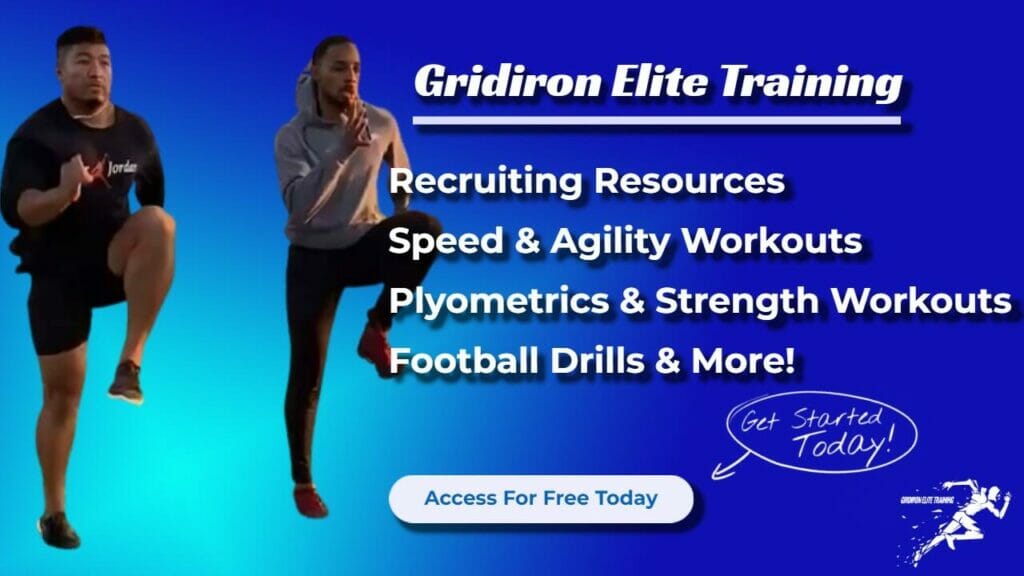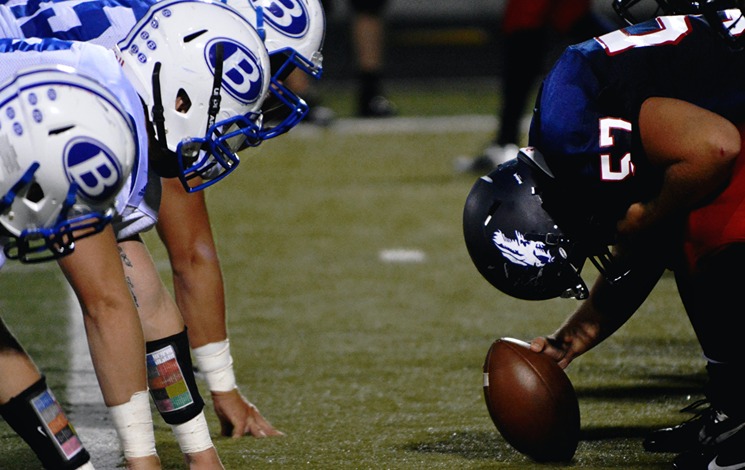
Defensive Line Positions Explained
Written By: Gridiron Elite Training

Defensive Line Positions Explained
Written By: Gridiron Elite Training
The Different Roles of Defensive Line Positions Explained
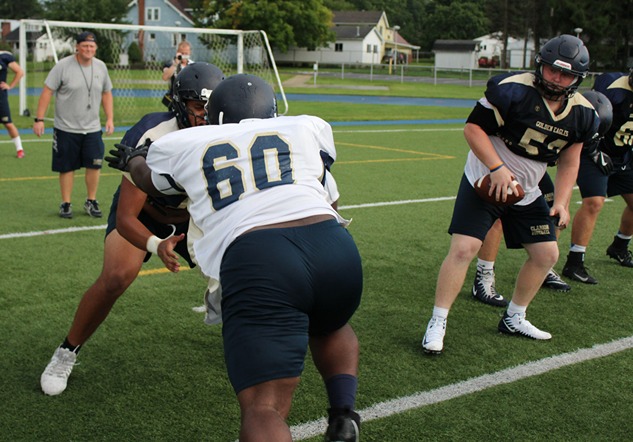
Football is a game of strategy, skill, and power. Each player has a unique role to play, contributing to the overall success of the team. One of the most critical aspects of a football team is the defensive line, which forms the backbone of a team’s defense.
The defensive line positions in football are the unsung heroes who put their bodies on the line to protect their team from the opponent’s offense. In this blog post, we will explore the different roles of defensive line positions, delving into the intricacies of the football defensive line positions and the roles they play on the field.
The Basics of Defensive Line Positions
To better understand the different roles of defensive line positions, it is essential first to grasp the basics. The defensive line, or “D-line” positions, are primarily responsible for stopping the opposing team’s run game and putting pressure on the quarterback. The D-line positions are made up of four key players: the defensive tackles and the defensive ends.
Defensive Tackle (DT)
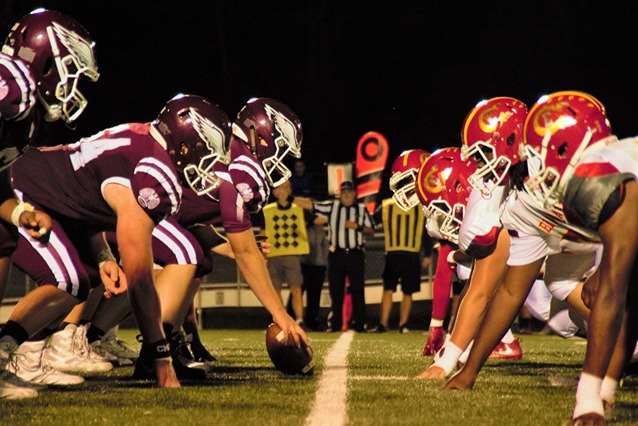
The defensive tackle position is one of the most crucial defensive line positions in football. Generally, there are two defensive tackles on the field, often referred to as the nose tackle and the under tackle. These players are typically the largest and strongest members of the defensive line, tasked with plugging gaps in the offensive line and stopping the run.
Nose Tackle (NT)
The nose tackle lines up directly across from the offensive center and is responsible for controlling the A-gaps (the gaps between the center and the guards). This player’s primary role is to stop the run by clogging up the middle and preventing the offensive line from creating running lanes. Nose tackles must be strong and able to take on multiple blockers, freeing up space for their fellow defensive linemen and linebackers to make plays.
Under Tackle (UT)
The under tackle, also known as the three-technique defensive tackle, lines up on the outside shoulder of the offensive guard. This player’s role is to generate interior pass rush and penetration, disrupting the quarterback’s passing lanes. The under tackle must be agile and have a quick burst off the line of scrimmage to create chaos in the backfield.
Defensive End (DE)
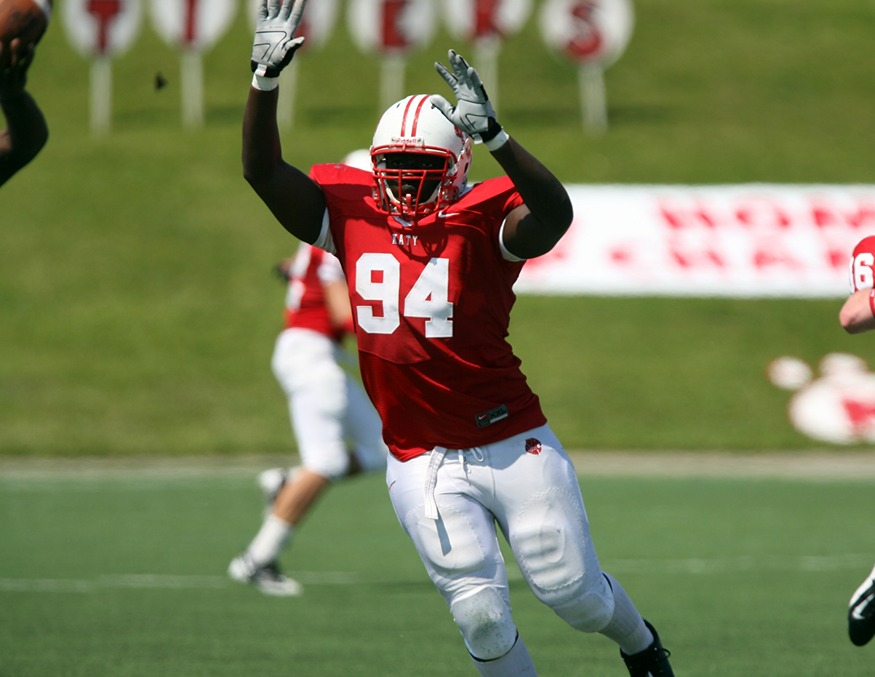
Defensive ends are the edge rushers of the defensive line positions in football. These players line up on the outside of the offensive tackles and are responsible for containing the run and pressuring the quarterback. There are two types of defensive ends: strong-side defensive end and weak-side defensive end.
Strong-side Defensive End (SDE)
The strong-side defensive end, also known as the left defensive end, lines up on the side of the offensive line with the tight end. This player is responsible for setting the edge and stopping the run, especially on plays that come their way. SDEs need to be strong and able to shed blocks from tight ends and offensive tackles to maintain their position and make plays in the backfield.
Weak-side Defensive End (WDE)
The weak-side defensive end, or right defensive end, lines up on the side of the offensive line without a tight end. This player’s primary responsibility is to rush the passer and create pressure on the quarterback. WDEs are typically faster and more agile than their strong-side counterparts, using their speed to beat offensive tackles and disrupt the quarterback’s timing.
The Importance of Versatility in Defensive Line Positions
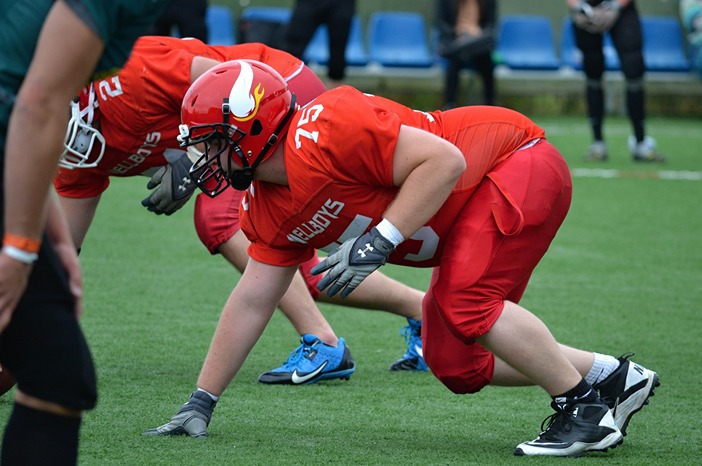
In today’s football landscape, versatility is crucial for defensive line positions. Many teams use multiple defensive schemes, and players must adapt to various roles within these systems. Some common defensive schemes include the 4-3 (four defensive linemen and three linebackers), 3-4 (three defensive linemen and four linebackers), and hybrid systems that blend elements from both.
In a 4-3 scheme, the roles of the defensive line positions remain relatively consistent with what we have discussed so far. However, in a 3-4 system, the responsibilities of the defensive linemen can change quite a bit. For example, the nose tackle becomes the key anchor in the middle, responsible for occupying two gaps and often taking on double teams. The defensive ends, meanwhile, will have a more prominent role in stopping the run, lining up as 3-4 defensive ends who need to be larger and stronger than their 4-3 counterparts.
Hybrid systems require players to be even more adaptable, as they may be asked to switch between different roles depending on the situation. For instance, a defensive end in a hybrid system might sometimes line up as a stand-up outside linebacker to rush the passer, while other times they will have their hand in the dirt as a traditional defensive end. This versatility enables teams to disguise their defensive schemes and confuse opposing offenses, making the roles of the defensive line positions all the more critical.
The Role of Technique in Defensive Line Positions
While size, strength, and speed are all important for defensive line positions, technique is the key to success. Proper technique allows these players to maximize their physical abilities and outmaneuver their opponents on the field. Some critical techniques that defensive linemen must master include hand placement, footwork, and leverage. By perfecting these skills, defensive linemen can shed blockers, penetrate the backfield, and make game-changing plays.
Conclusion

The defensive line positions in football play a crucial role in determining the success of a team’s defense. From stopping the run to pressuring the quarterback, these players must be versatile, skilled, and tenacious. Understanding the different roles of the defensive line positions allows fans and players alike to appreciate the strategic nuances of the game and marvel at the athleticism and skill displayed on the field.
By exploring the intricacies of the football defensive line positions and the roles they play on the field, we hope to have provided a comprehensive guide to understanding the importance of the D-line positions. Each position on the defensive line has its unique responsibilities and characteristics, and these players’ ability to work together and execute their roles is vital to the team’s overall success. So next time you watch a football game, take a moment to appreciate the defensive line positions and the gritty, hard-nosed battle taking place in the trenches.
Subscribe To Get Updates On Newly Released Articles
Don't forget to share this post!
Continue Reading More Football Recruiting Tips Below
Related Articles

5 Keys to the College Football Recruiting Process
If you are a high school football player, it’s easy to get lost in the college football recruiting process. This article will break down key stages of the recruiting process.
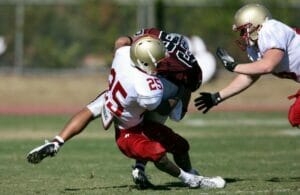
Junior College Football Recruiting
If you’re thinking about playing college football, read this article for quick tips on the process of juco college football recruiting.
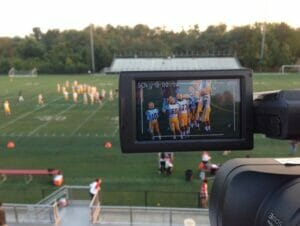
Complete Guide to Football Recruiting Rankings
Find out why football recruiting rankings are important, where they come from, what they mean and how they affect your recruiting strategy.

Gridiron Elite Training was started to help educate and provide football players with a community to receive proper training and guidance.
We created “The Gridiron Elite Academy” which is an online football performance network that provides football players of all levels with sports performance workout programs, football position-specific drills, mindset coaching, mental toughness training, recruiting guidance and help, and nutrition programs.

